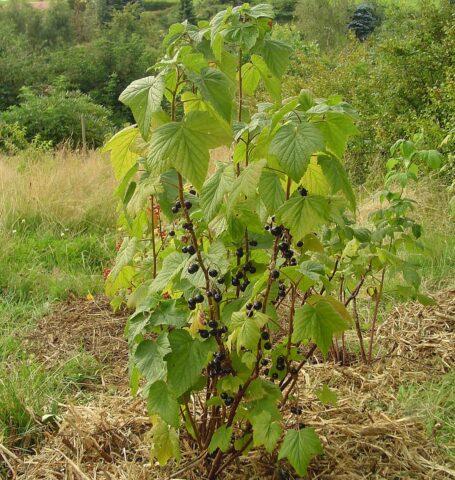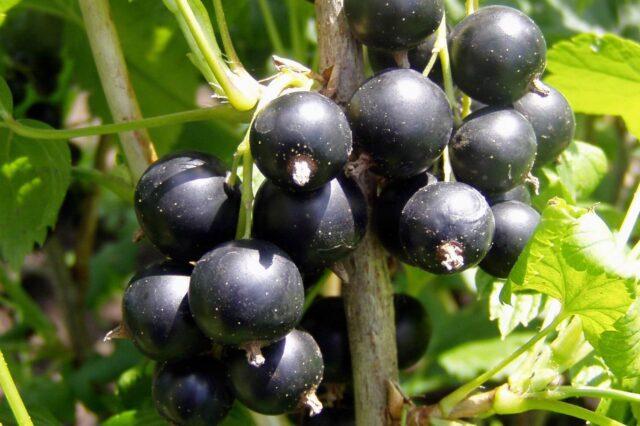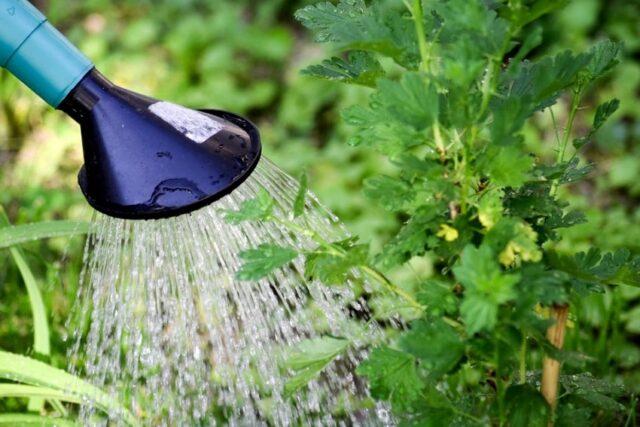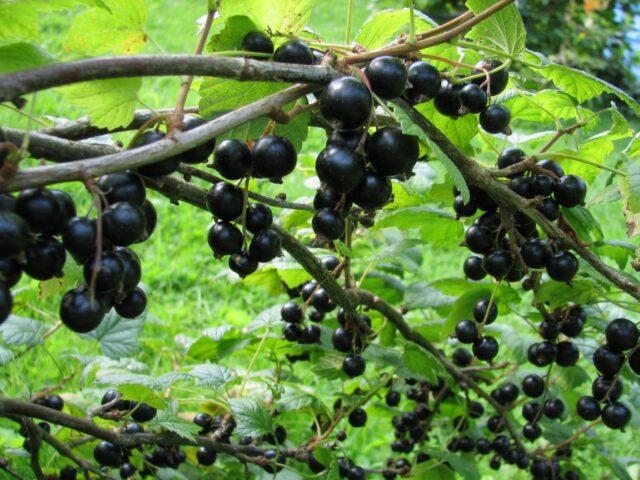Content
Blackcurrant Heiress is a Soviet selection that appeared in the late 70s of the XX century. Differs in winter hardiness and stable productivity. The berries are sweet and sour, with a good taste. It is permissible to grow the variety in Western Siberia, the middle lane, the Volga region and other regions.
Breeding history
Blackcurrant Heiress was bred in the 70s of the last century on the basis of the All-Russian Institute of Selection and Technology of Horticulture and Nursery. The variety was obtained by V.M. Litvinova on the basis of the varieties Golubka and Moskovskaya.
The tests, which began in 1978, were successful. Since 1994, the heiress currant has been included in the register of breeding achievements in the Russian Federation. The variety has been approved for cultivation in the climatic conditions of Western Siberia and the Volga-Vyatka region.
Description of the variety of black currant Heiress
The bush is medium-sized (120–150 cm). Has a compact, non-thickened crown. Shoots of medium diameter, straight, may bend slightly during fruiting. Young branches have a bright color, after lignification they turn brown, shine in the sun. Black currant leaves The heiress is moderately large, typical green color, with a slightly wrinkled surface. The leaf plates are slightly convex. Weak pubescence is noticeable on them. Moderately shine in the sun.
Clusters are medium in size, contain up to 10 fruits. The main characteristics of currant berries Heiress:
- medium size: from 1.2 to 1.5 g;
- the skin is thin, but at the same time strong;
- round shape;
- the color is black;
- the surface is matte;
- there is a small cup;
- the taste is sweet and sour, pleasant: according to the tasting score from 3.9 to 4.3 points;
- vitamin C content: 150-200 mg per 100 g;
- purpose: universal.

Black currant bush Heiress is medium-sized, compact crown
Characteristics
Since the variety was bred for the climatic conditions of Siberia, it tolerates unfavorable weather and frosty winters well. The crop can be grown in almost all Russian regions.
Drought tolerance, winter hardiness
Blackcurrant Heiress can withstand Siberian frosts, but it is advisable to cover young seedlings for the winter. In the heat, additional watering should be established at least once a week (2 buckets per bush).
Pollination, flowering period and ripening times
The Heiress variety is self-fertile. The culture does not need to plant other types of currants and pollinators, the fruits are tied independently. Ripens early. Flowering begins in the second half of June, berries can be harvested during July. Fruiting is amicable.
Productivity and fruiting, keeping quality of berries
The yield of black currant Heiress, depending on age, climatic conditions and care features, ranges from 2.1 to 3.5 kg. Fruiting is early (mid-July), the crop must be harvested quickly, since the berries crumble when overripe. Due to the thin but dense skin, keeping quality and transportability are good. The purpose of the fruit is universal. Berries are used fresh and in different preparations: jam, jam, fruit drink, compote. The fruits are ground with sugar.
Disease and pest resistance
Blackcurrant Heiress has an average resistance to common diseases: anthracnose, powdery mildew, terry.
The heiress lacks immunity against kidney mites. Preventive treatment with fungicides is carried out in the spring. To do this, use: Bordeaux liquid, "Fundazol", "Ordan", "Hom", "Maxim", "Skor", "Fitosporin".
Folk remedies are used against insects:
- decoction of potato tops, marigold flowers;
- infusion of wood ash with laundry soap, chopped garlic cloves;
- baking soda solution.
If the invasion of pests is too strong, it is necessary to carry out 1–2 treatments with preparations: "Vertimek", "Fufanon", "Match", "Inta-Vir", "Green soap".
Advantages and disadvantages
Black currant of the Heiress variety is valued for its stable yield, unpretentiousness and pleasant taste. The berries are medium, tolerate transportation well.

The heiress currant fruits are distinguished by their balanced taste and attractive appearance.
Pros:
- high winter hardiness;
- early ripening;
- can be grown in most regions;
- stable yield;
- good keeping quality and transportability;
- resistance to certain diseases;
- undemanding to growing conditions.
Minuses:
- no immunity to kidney mites;
- tendency to shedding.
Features of planting and care
When buying blackcurrant seedlings, the Heiress needs to be examined: the roots and leaves must be healthy, without spots. Landing is scheduled for early October (in Siberia a week earlier), in extreme cases - in April. The place should be free from moisture stagnation, protected from the wind. The soil is loose and fertile.
If the soil is depleted, then in the summer it is dug up, compost or humus (5 kg per 1 m2) or complex mineral fertilizer (2 tablespoons per 1 m2) are covered. Sawdust or sand is added to clay soil - 500 g each for the same area.
A month before planting, several holes are dug with a depth and diameter of 50-60 cm with an interval of 1.5 m. A layer of small stones is laid on the bottom, and fertile soil is sprinkled on top. On the day of planting, blackcurrant seedlings are placed in a growth stimulant solution. For these purposes, use aloe juice with water in a ratio of 1: 1, "Kornevin", "Heteroauxin", "Zircon". Then they are planted at an angle of 45 degrees, deepening the root collar by 7–8 cm. It is well watered and mulched with peat and sawdust.
Caring for black currant Heiress is quite simple:
- Young seedlings are watered 2 times a week, adult bushes - 2-3 times a month (2 buckets of settled water). In the heat, they are moistened weekly, the crown is periodically watered in the evening.
- Top dressing 2-3 times per season: urea (20 g per bush) in April, complex fertilization (30-40 g) during the formation of berries and after harvesting.
- After rains and watering, the soil is loosened.
- To prevent weeds from growing, they lay mulch, periodically weed.
- To protect the bushes from mice, moles and other rodents, a netting net is fixed around the trunk.
- For the winter, mulch, cover with spruce branches or burlap.
- Pruning black currant The heiress is not very difficult because the crown does not thicken. In the spring, you need to have time to remove all damaged shoots before the buds begin to swell (first decade of April). It is better to postpone the shaping haircut until the fall.
Conclusion
Blackcurrant Heiress is a rather interesting, although not very common variety. Does not need special conditions, tolerates winter well, rarely suffers from diseases. All gardeners, including beginners, will cope with the cultivation of this culture.
Reviews with a photo about black currant varieties Heiress











